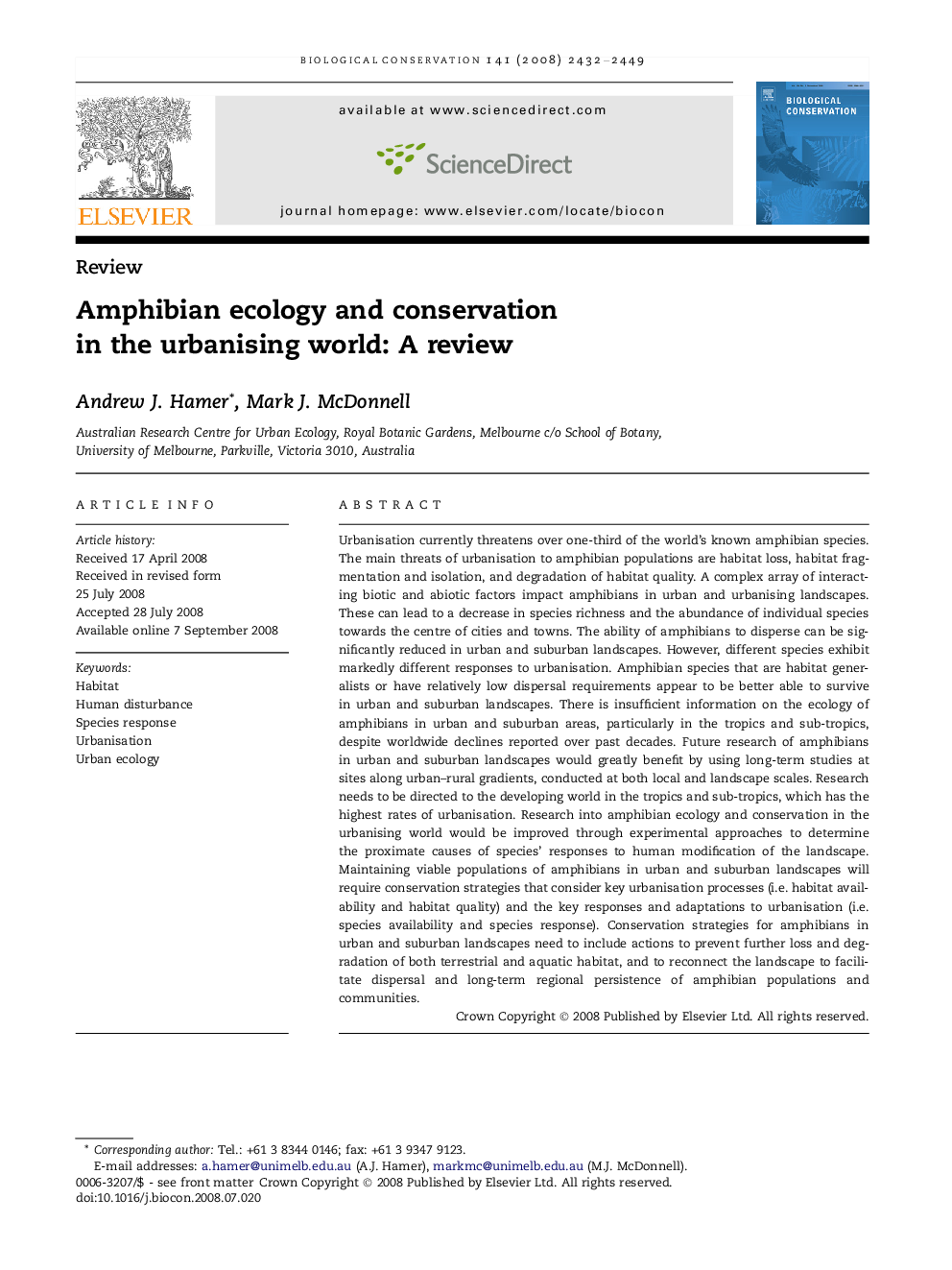| Article ID | Journal | Published Year | Pages | File Type |
|---|---|---|---|---|
| 4386631 | Biological Conservation | 2008 | 18 Pages |
Urbanisation currently threatens over one-third of the world’s known amphibian species. The main threats of urbanisation to amphibian populations are habitat loss, habitat fragmentation and isolation, and degradation of habitat quality. A complex array of interacting biotic and abiotic factors impact amphibians in urban and urbanising landscapes. These can lead to a decrease in species richness and the abundance of individual species towards the centre of cities and towns. The ability of amphibians to disperse can be significantly reduced in urban and suburban landscapes. However, different species exhibit markedly different responses to urbanisation. Amphibian species that are habitat generalists or have relatively low dispersal requirements appear to be better able to survive in urban and suburban landscapes. There is insufficient information on the ecology of amphibians in urban and suburban areas, particularly in the tropics and sub-tropics, despite worldwide declines reported over past decades. Future research of amphibians in urban and suburban landscapes would greatly benefit by using long-term studies at sites along urban–rural gradients, conducted at both local and landscape scales. Research needs to be directed to the developing world in the tropics and sub-tropics, which has the highest rates of urbanisation. Research into amphibian ecology and conservation in the urbanising world would be improved through experimental approaches to determine the proximate causes of species’ responses to human modification of the landscape. Maintaining viable populations of amphibians in urban and suburban landscapes will require conservation strategies that consider key urbanisation processes (i.e. habitat availability and habitat quality) and the key responses and adaptations to urbanisation (i.e. species availability and species response). Conservation strategies for amphibians in urban and suburban landscapes need to include actions to prevent further loss and degradation of both terrestrial and aquatic habitat, and to reconnect the landscape to facilitate dispersal and long-term regional persistence of amphibian populations and communities.
